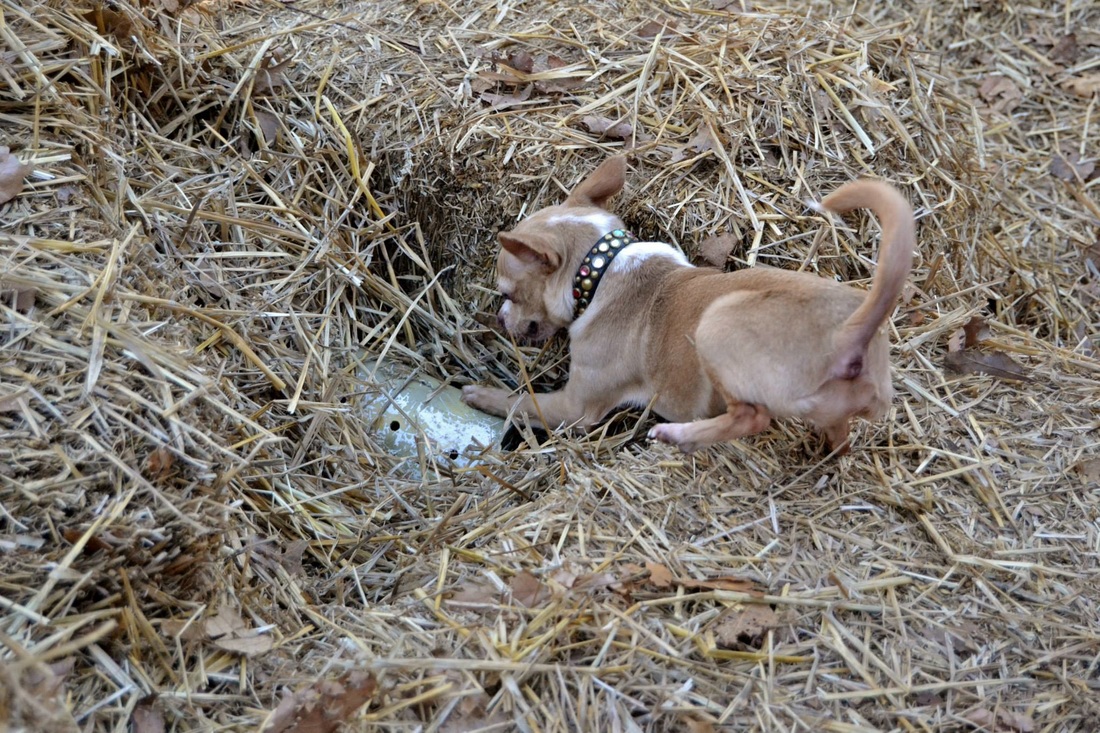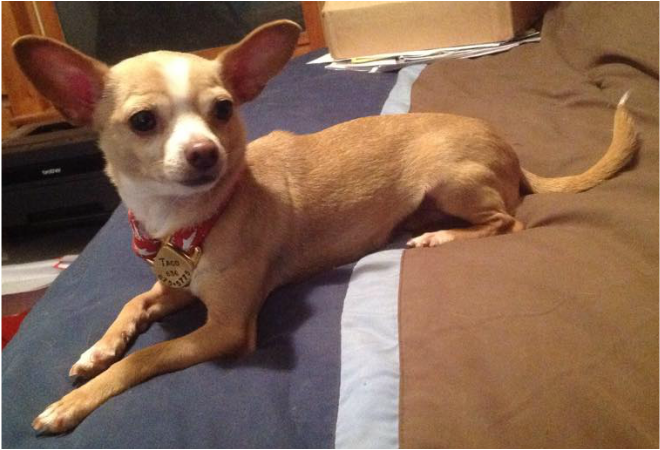Barn Hunt in a Nutshell
History of the Sport
Barn Hunt became a titling sport in 2012. Prior to the creation of the sport, specific breeds (various Terriers, Dachshunds, etc.) were allowed to compete in Earthdog and Go to Ground hunting events through the American Kennel Club. Barn Hunt was created to allow dogs of all pure and mixed breeds an opportunity to title in a sport that highlighted the instinct to hunt vermin. For more information, check out the official Barn Hunt Association's website.
Difficulty Levels
Sanctioning Organizations
How to get Started
A group class or taking private lessons is a wonderful place to start; not only will you and your dog learn the necessary skills and behaviors, get to practice regularly, but exposure to other dogs and distractions is great preparation for a show!
Basic Supplies Needed
Equipment needed for classes typically includes:
Local Training Opportunities
Local Clubs
- What it is: Dogs and their handlers work as a team to hunt out rats hidden in a hay obstacle course. Dogs must indicate a number of rats, ignore distractor tubes, climb on top of hay bales, and negotiate an 18" wide and tall tunnel.
- Prior Training: Basic Pet Manners and Obedience, as well as the dog being able to focus, learn and perform complex behaviors in a very distracting environment. Some specific behaviors to teach are good attention under distractions , sit, down, stay, and leash manners.
- Physical Demands on Dog: High
- Physical Demands on Handler: Mild.
- Most suitable breeds: Various breeds - there are no specific structural or breed specific demands. The only limiting factor in this sport is the size of the tunnel, so as long as the dog can fit through the tunnel, they can play!
- Best Temperament: Happy-go-lucky, workaholics; this sport is suitable for both low and high energy dogs alike.
- Training Complexity: Moderate
- Mental Stimulation: Moderate
- Physical Stimulation: Moderate
- Recreational Opportunities: Low - this is a new and growing sport, there aren't many places yet that offer Barn Hunt training and/or classes.
- Opportunities to Compete: High.
- Cost: Moderate - in addition to the cost of training and classes if necessary, trial fees are about $20-$25 per run.
History of the Sport
Barn Hunt became a titling sport in 2012. Prior to the creation of the sport, specific breeds (various Terriers, Dachshunds, etc.) were allowed to compete in Earthdog and Go to Ground hunting events through the American Kennel Club. Barn Hunt was created to allow dogs of all pure and mixed breeds an opportunity to title in a sport that highlighted the instinct to hunt vermin. For more information, check out the official Barn Hunt Association's website.
Difficulty Levels
- Instinct - Dogs must indicate a rat that is hidden in one of three visible tubes.
- Novice - Dogs are given 2 minutes to find one rat, ignore one bedding, and ignore one blank tube. They must also climb and put all four feet on one bale of hay and go through a short, straight tunnel. They can do these things in any order.
- Open - Dogs are given 2 minutes and 30 seconds to find two rats (at least one of which must be hidden elevated, on top of a bale of straw), ignore two bedding, and ignore one blank tube. They must also climb and put all four feet on one bale of hay and go through an L-shaped tunnel. They can do these things in any order.
- Senior - Dogs are given 3 minutes and 30 seconds to find four rats (at least two of which must be hidden elevated, on top of a bale of straw), ignore three bedding, and ignore one blank tube. They must also climb and put all four feet on one bale of hay and go through a short, straight tunnel. They can do these things in any order.
- Masters - Dogs are given 4 minutes and 30 seconds. A handler must call clear after a dog has run through a course containing a total of ten tubes. These tubes can include any combination of 1-5 rats, and 7-3 bedding. Any or all, or any combination thereof, of rats can be hidden elevated or on the ground. They must also climb and put all four feet on one bale of hay and go through a short, straight tunnel. They can do these things in any order.
Sanctioning Organizations
How to get Started
A group class or taking private lessons is a wonderful place to start; not only will you and your dog learn the necessary skills and behaviors, get to practice regularly, but exposure to other dogs and distractions is great preparation for a show!
Basic Supplies Needed
Equipment needed for classes typically includes:
- While the dog will run completely naked in competition, in training it is good to have a flat/buckle collar or a well fitting harness
- 4-6 foot nylon or leather leash
- Treats or toys to reward the dog
- Rat tubes, rats, and rat bedding
- Hay bales
Local Training Opportunities
- Infinite Pawsibilities will be offering classes and lessons beginning July 2015
Local Clubs



 RSS Feed
RSS Feed